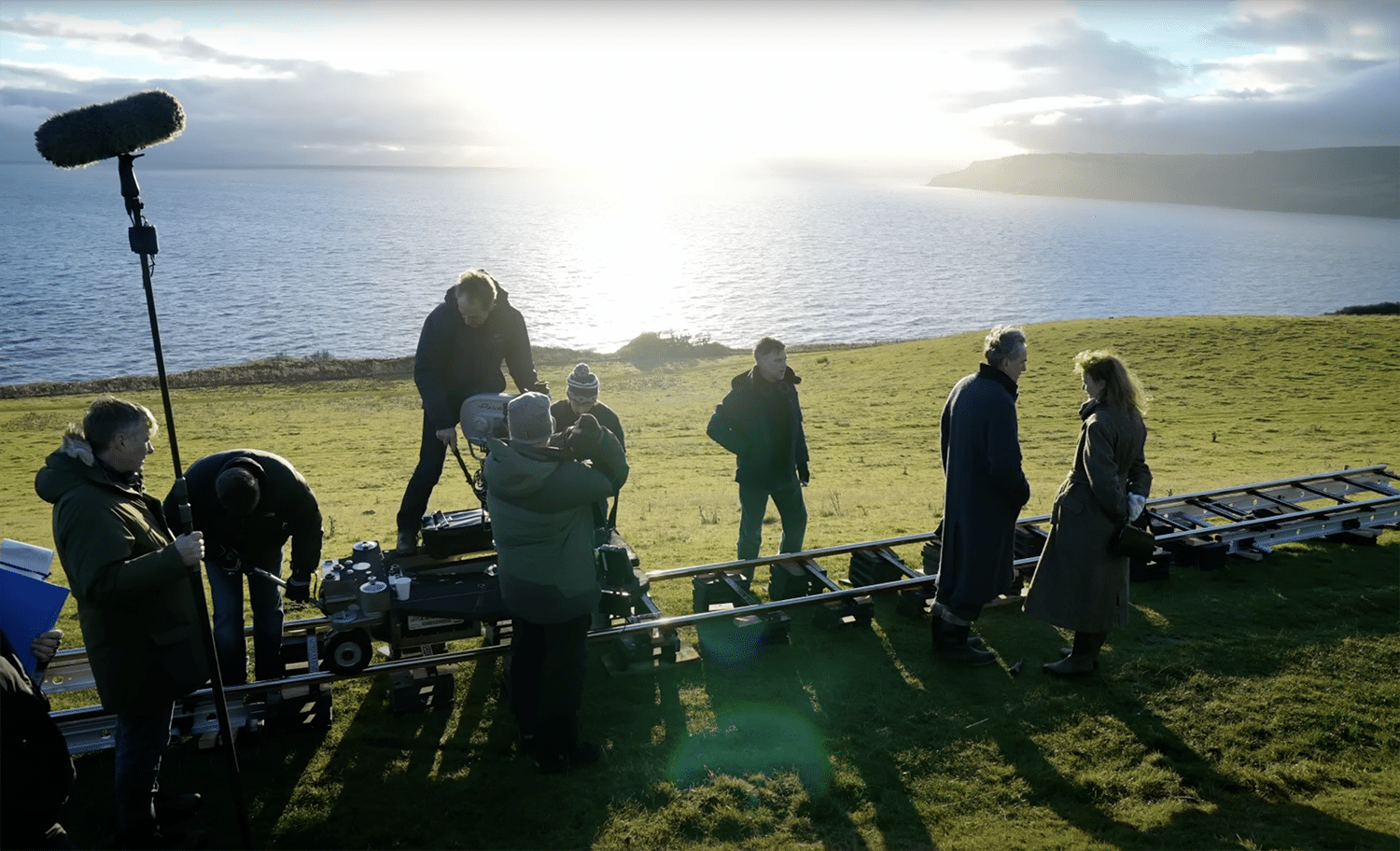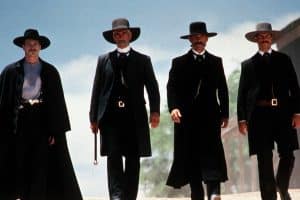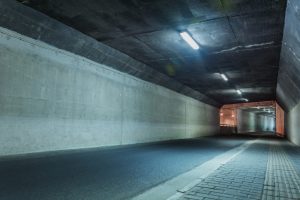Cinematographers are only as good as their crew, so let’s discuss what each crew member does to help them get to the finish line.
Today we’ll be discussing the crew members from the grip and electrical department on a film set that report to the director of photography. A cinematographer’s work can only be fully realized with the help of their crew. We’ll detail each member’s duties and contributions that, in turn, help create some of the most beautiful shots, all while maintaining a level of efficiency and safety on set. Let’s get started!
Before we begin, I want to hit you with a quick recommendation — if you want in-depth accounts from working key grips, gaffers, and more, be sure to check out Roger Deakins’s podcast “Team Deakins.” There’s a treasure trove of information in each episode that will help you understand the specific roles that each crew member needs to perform for a movie production to succeed.
Gaffer
A gaffer is the head of the electrical department on a film set. They’re responsible for the execution of the lighting plan designed by the cinematographer, or DP. Their duties include setting up lights, positioning them correctly to get the desired lighting effects, and ensuring that the lighting equipment is in good working condition.
The gaffer works closely with the cinematographer to create the tone and atmosphere of each scene, using different lighting techniques while using different tools. They also manage a team of electricians and grips to handle the electrical aspects of lighting setups all while ensuring the safety of everybody on set.
Best Boy Electric
A best boy is a key member of the electrical or grip department on a film set. There are typically two best boys; the best boy electric and the best boy grip.
The best boy electric works closely with the gaffer and is responsible for managing the electrical department. This includes coordinating the electricians, overseeing the setup and maintenance of lighting equipment, and ensuring that all electrical aspects of the production are handled safely and efficiently.
Electrical Lighting Technician
An Electrical Lighting Technician (ELT) is a member of the electrical department on a film set. They’re responsible for assisting the gaffer and best boy electric in setting up the lighting plan that was initially designed by the cinematographer. ELTs work with different types of lighting equipment, like lamps, cables, and rigging, to set up and adjust lights according to the cinematographer’s specifications. ELTs help set up and position lighting fixtures, in a safe manner.
They lay out and run electrical cables from the power source to the lighting fixtures, making sure they are organized and safely positioned to avoid accidents. They may assist in setting up power distribution systems to supply electricity to the lighting equipment on set. They help adjust the intensity, color, and direction of lights as needed to pull off certain “looks” for each scene. ELTs also assist in maintaining and troubleshooting lighting so that everything is working properly on set.
Generator Operator
The main responsibility of a generator operator is to operate and maintain generators that provide electrical power to the film production. Seems obvious, yeah? Oftentimes the film set will be on-location somewhere without a direct power source, so generators are required!
This role includes starting up, monitoring, and shutting down generators as needed to supply electricity for lighting, cameras, sound equipment and other production needs. So they distribute electrical power from the generators to different departments and equipment on set. They may set up and manage power distribution systems, including cables, distribution boxes, and transformers, to make sure that power is delivered safely and efficiently.
Key Grip
The key grip is the head of the grip department on a film set. Keyword being . . . ”key” . . . ha! Grips are responsible for rigging and supporting different equipment used in camera movements and lighting setups. They oversee the setup and operation of camera support equipment like dollies, cranes, and camera mounts. This involves rigging the equipment safely and capturing ultra-smooth camera movements during filming.
While the gaffer and electrical department handle lighting fixtures, the grip department helps with lighting support equipment such as flags, nets, diffusions, and bounce boards. The key grip ensures that these tools are positioned correctly to control and shape light according to the cinematographer’s vision.
Key grips also make sure that everything is rigged safely and securely. This includes using appropriate rigging techniques and equipment to prevent accidents on set. They manage a team of grips, including best boy grips and any additional grips or production assistants. They delegate tasks, provide guidance on equipment setup, and ensure that the grip department operates smoothly throughout production.
Overall, the key grip plays a crucial role in supporting the technical aspects of filmmaking, working closely with other departments to achieve the director and cinematographer’s vision while keeping everyone safe and on time while on set!
Best Boy Grip
The best boy grip works under the key grip and is responsible for managing the grip department. They oversee the rigging and operation of equipment used to support cameras and create camera movements, such as cranes, dollies, and rigging for handheld shots. They also assist with the setup and maintenance of other equipment like flags, nets, and diffusers used to control and shape light. In both cases, the best boy is a senior position within their respective departments and plays a crucial role in the smooth execution of filming operations.
Dolly Grip
A dolly grip is a specialized grip responsible for operating and maneuvering the camera dolly — a wheeled platform that the camera and sometimes the camera operator are mounted to. The primary responsibility of a dolly grip is to operate the camera dolly during filming. Someone has to do it, right? This involves smoothly pushing, pulling, or steering the dolly along tracks or on a smooth surface to get that ultra smooth shot that the director or cinematographer wanted. Dolly grips work closely with the camera department, including the camera operator and assistant camera team, to coordinate camera movements. They communicate with the camera operator to ensure that the dolly movements complement the framing and composition of each shot. They often practice and rehearse movements before filming to ensure they can achieve the desired results during production.
Cover Image via Annapurna.
Looking for filmmaking tips and tricks? Check out our YouTube channel for tutorials like this . . .




